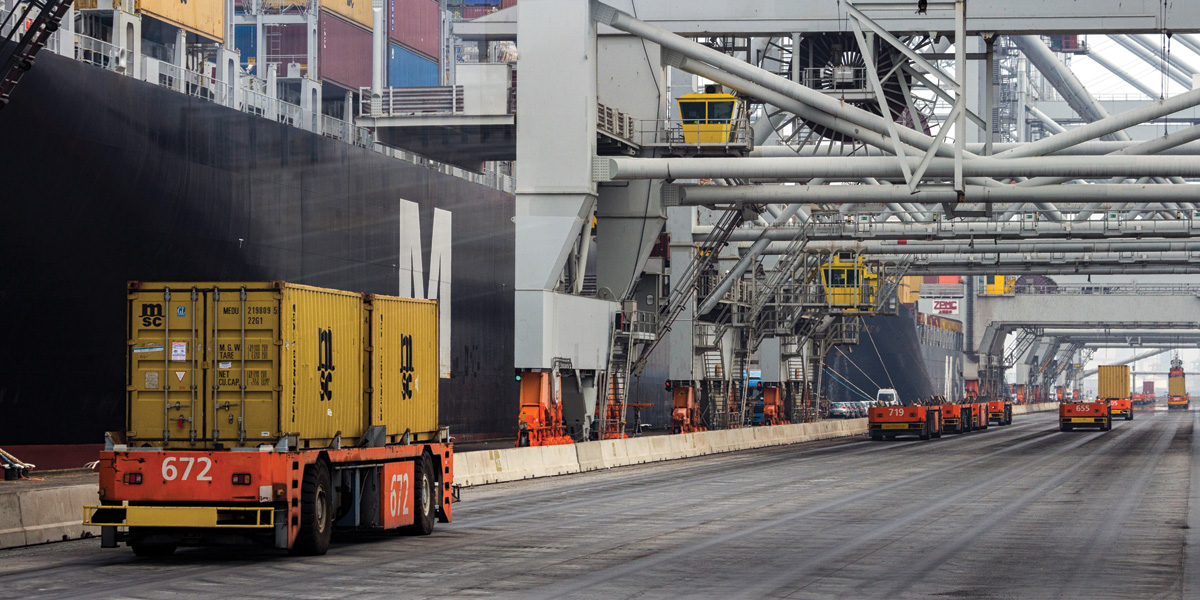The global logistics automation market is growing at a considerable rate. According to Netscribes, the global logistics automation market is expected to be valued at $100.1 billion by 2023. The immense growth of the global e-commerce and retail industry are major driving forces behind implementing logistics automation solutions.
Growth drivers and opportunities
Catering to customer demands: The surge in customer expectations for better quality and delivery systems are prominent factors in driving the logistics automation market. The growing predilection for little or no delivery charges has led to a sharper focus on automation, including flexible fulfillment networks, proximity-based cost modelling, and inventory visibility solutions to stay ahead of the competition.
Emerging e-commerce industry: With key e-commerce players like Amazon and eBay expanding their operations across the world, e-commerce sales are expected to rise by 200% in 2020, as compared to 2014, causing traditional warehouses to drift towards automation to acclimatize to the changing e-commerce landscape. This also makes storing mammoth volumes of data essential, driving logistics closer towards automation and big data.
Challenges facing the logistics automation industry
Initial capital investments: Only a handful of companies possess the capital prowess required to invest in automation, which might take long periods to break even. For companies under short-term pressure, the recovery time might just be too long, making them reluctant to invest.
Technical difficulties and implications: Robots used in logistics are still facing challenges like stock discrepancies, negative inventory, and slotting issues, which will have to be addressed for the market, in order to flourish
Lack of skilled workforce: A shortage of workers with the required skillsets also acts as a significant hindrance in the requirement of workers for maintenance, calibration, and other operational requirements.
Key trends in the logistics automation industry
Concepts of elastic logistics: Elastic logistics revolve around the flexibility of logistics systems to expand and shrink its capabilities to adjust with the demand in a timeframe. Flexible automation solutions enhance the agility and elasticity of logistics infrastructure to cost-effectively adjust to market fluctuations. This allows suitable solutions for requirements like cost control, warehouse management, priority deliveries, and others.
Integration of new technologies: Technologies such as AR and wearables for activities like picking and sorting have been gaining prominence in this industry. AI and blockchain technologies are used because they provide enhanced security and transparency. By 2021, 25% of the large global companies will be piloting or using AI and Blockchain-based automation for transactional procurements.
Employee movement automation: Ongoing experiments regarding the movement of workers in large production facilities are gaining momentum as it increases efficiency and saves time.
Data storage and demand anticipation: Companies will adopt data visualization techniques, Big Data algorithms, and smarter analytics to boost process efficiency and service quality, mainly by shortening the time taken for delivery. However, the big change is expected in using geography-based search trends by companies to predict demand for certain products in a region and ship them in advance.
Automating logistics movement: Many logistic services providers are considering the use of autonomous vehicles, as these are easier to track and require fewer manual interventions. Though the initial investment for autonomous trucks is high, the increased reliability and efficiency tend to outweigh it. The Cascadia truck by Freightliner and the Volvo FH trucks are a few names of autonomous vehicles that were successfully tested for logistics.
Use of autonomous stand-alone robots: Cobots (collaborative robots) work to automate a variety of processes, from counting and sorting, to reporting and come with various features like lightweight designs, customizable GPS and mapping capabilities, and seamless integration with Warehouse Management System (WMS), Warehouse Execution System (WES), and Warehouse Control System (WCS). Also, autonomous drone technology, created out of RFID technology, is evolving and is expected to enhance the logistics automation further.
For in-depth research and analysis of the global logistics automation market, connect with us at info@netscribes.com






